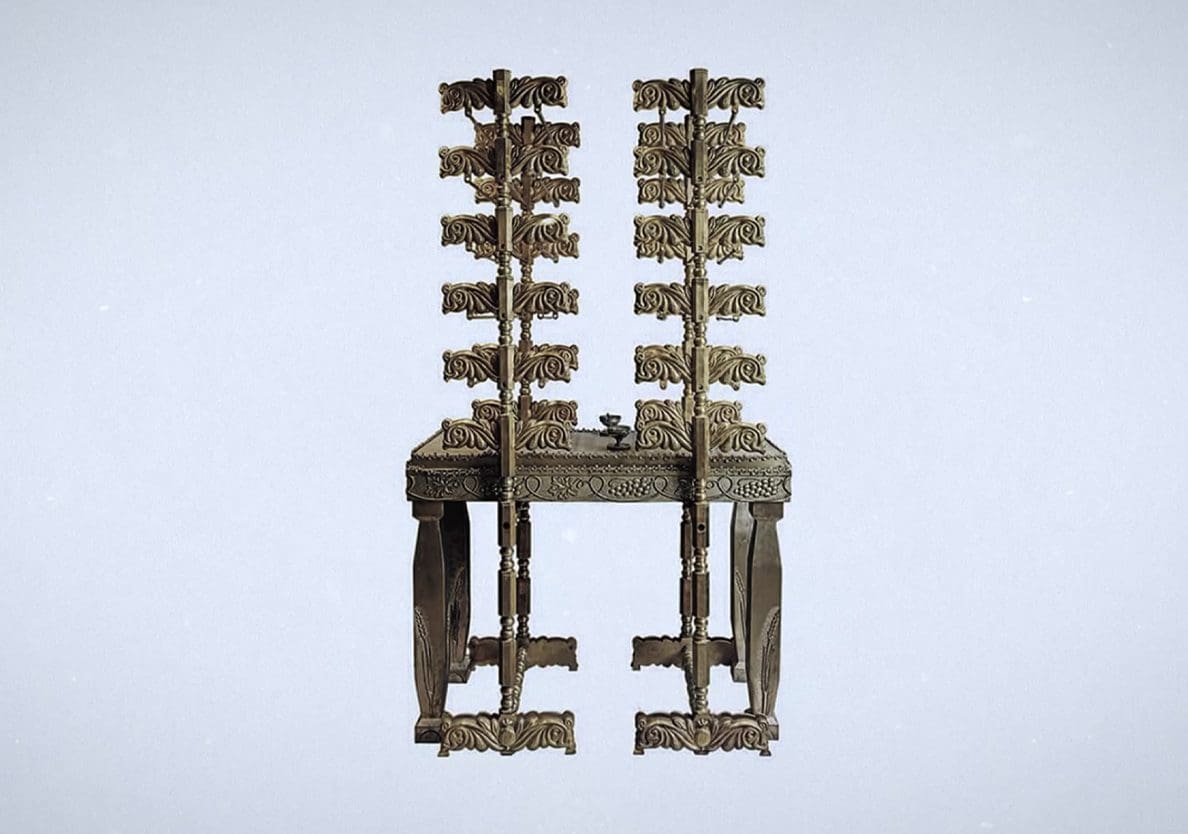A key element of Israelite worship of God was the Bread of the Presence. It was considered one of the three holiest regular actions in Israelite worship. These three holy actions all took place in the sanctuary of the Tabernacle and later Temple, the area closest to the Holy of Holies, and they were carried out by the high priest exclusively: They were the lighting of the Golden lampstand, and the burning of incense on the golden altar and the replacement of the Bread of the Presence on the Golden Table (Exodus 25, 30). All three actions represented parts of the covenant that God had with Israel.
“1 Maccabees records that the Bread of the Presence was stolen by the enemy king, Antiochus Epiphanes, in 170BC.”
The Bread of the Presence symbolized God’s provision towards Israel. It was also connected with the Sabbath as a perpetual or ongoing ordinance. On the Sabbath, the day of rest, the priest was to switch out the Bread of the Presence. The week-old bread was then be consumed by the priests in the sanctuary as it had been made holy, or sanctified, by being in the presence of God (Leviticus 24). It is also connected to the manna, or bread from heaven that God provided for Israel during their time in the wilderness after the Exodus. In Leviticus 24:5 we learn that each loaf of bread was to be made with two-tenths of an ephah of fine flour. This is the same amount of manna that the Israelites were to collect per person in preparation for their Sabbath in the wilderness (Exodus 16:22). This measurement works out to be around 7 pounds or 3.2 kilograms per loaf.
The Bread of the Presence consisted of 12 loaves arranged in 2 piles of 6 on top of the golden Table of the Presence. These loaves are also called the bread of piles (1 Chronicles 9:32; 23:29), the continual or regular bread (Numbers 4:7), and holy bread (1 Samuel 21:6). Their number seems to represent the 12 tribes of Israel, whose provision is always before the face (presence) of God. So entrenched was the symbolism of the bread with the provision of God that it later became a saying in Jewish tradition that if one wanted material blessing, they should point their feet North when they prayed (Bava Batra, 25b 8), the Table of Bread (aka. Show bread) was oriented on the North side of the Tabernacle.


In 1 Chronicles 9:31-32, we learn that the Kohathite family of the Levitical priests were tasked with the special service of baking the bread of the presence. It’s shape, recipe, and arrangement also became quite the centre of later tradition. While most modern representations of the Table of Showbread are rather straightforward – a table with a golden rim around its top – modern Judaism has kept the tradition that the loaves were separated by golden reeds or rods, adding support to the unleavened bread. These are envisioned and depicted as moveable shelves.
To the Table built during Moses’ lifetime, the Bible tells that King Solomon added 10 more to his Jerusalem Temple. It’s unknown whether all or some of these tables survived until the time of the Babylonian destruction of Jerusalem and the Temple, but either one table was brought back with Ezra and the Judean exiles (Ezra 1:7-11) or another table was made for the 2nd Temple to have functioned. The apocryphal book of 1 Maccabees records that the Bread of the Presence was stolen by an enemy king (Antiochus Epiphanes in 170BC), but that another one was built by Simon Maccabee. After all of Herod the Great’s grand renovations to the Jerusalem Temple, it was destroyed by the Romans in AD70, and on the arch of Titus built to commemorate Rome’s victory, the Table of Showbread is depicted being carried off by celebrating soldiers.

Corie Bobechko is a daily co-host, speaker, and writer of Bible Discovery. She also hosts a YouTube channel that shows how history and archaeology prove the Bible. Her heart for seekers and skeptics has led her to seek truth and share it with others. Corie also has a Bachelor of Theology from Canada Christian College.
• The Lexham Bible Dictionary
• The Anchor Yale Bible Dictionary
• https://en.hamikdash.org.il/resources/dictionary-of-terms/shulchan-lechem-hapanim-table-of-the-showbread/
• https://templeinstitute.org/illustrated-tour-the-vessels/
• https://templeinstitute.org/illustrated-tour-the-mikdash-sanctuary/
• https://www.chabad.org/library/article_cdo/aid/2974301/jewish/The-Showbread-The-How-and-Why-of-the-Temple-Bread-Offering.htm#footnote10a2974301







So grateful for the work you do.